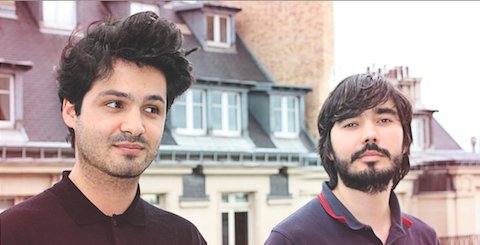
Turning Ads and Oranges Into Energy
27/07/2011
Photos from the archives of Alexander Kalchev and Siavosh Zabeti
Alexander Kalchev (1984) and Siavosh Zabeti (1986), from the advertising agency DDB Paris, are the new stars in the advertising industry – at the Cannes Advertising Festival their work brought their agency one of the most notable awards in the business. Both creative art directors belong to the generation of advertisers that don't limit themselves with the classic advertising weaponry (videos on TV and advertising space in the printed media) when solving their clients problems. Alexander's and Siavosh's professional specialty is to include society and to induce interactivity. They have managed to bring across advertisers' messages with video games, various interactive activities and even with electricity generated by oranges.
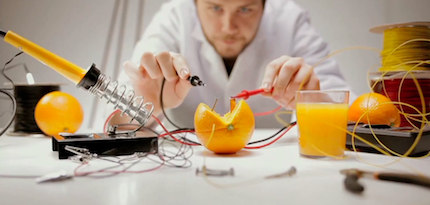
Their advertising campaign for Tropicana, with the logo “oranges contain energy”, was one of the duets' most highly acclaimed and popular projects. The height of the campaign was a billboard with real oranges that were generating real electricity, which lighted the company's name in lights.
Another of their success stories was a project for the company Bouygues Telecom. It's a special application for users of Facebook – the ability to take all of your virtual memories, such as pictures and the best comments written about them, and to put them into a physically real Facebook users book that you can keep close to you.
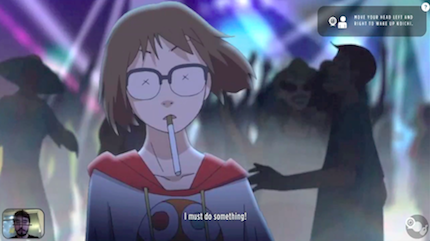
Alexander Kalchev was born in Bulgaria and studied philosophy and literature at the University of Edinburgh. He then broke off his studies in Edinburgh and went to the Miami Ad School instead. He has worked in advertising agencies in Moscow, Brussels and Berlin. Siavosh Zabeti was born to an Iranian family in Paris, but grew up in Germany; at 16 he enrolled in Berlin's digital media studio ART+COM. Lacking an education in classic drawing, he was denied entry to Berlin's University of Art, and on advice from a friend, headed for the Miami Ad School. He has worked in ad agencies in Stockholm, Amsterdam and at Saatchi in New York. The two met during their study years, and since 2007 the advertising duet has been working at the agency DDB Paris.
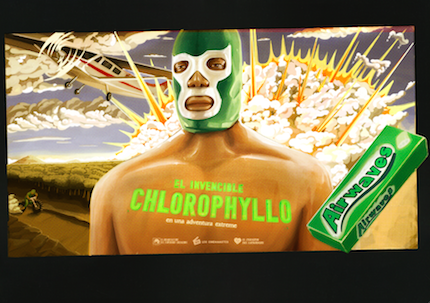
Invited by the Latvian Art Directors' Club, Alexander Kalchev and Siavosh Zabeti visited Riga in the middle of July and gave a lecture titled “From Wii to Lucha Libre. Going Digital for Brands You Wouldn't Expect”. took advantage of the opportunity to meet and interview the talented tandem.
What role does design have in your work?
Siavosh (S): It is important to us that each project should have its own design code and that it should be purposefully followed in all parts of the project. So that the design makes the campaign immediately recognizable. We pay attention to the smallest of details. For instance, if we've taken on the advertising campaign for a film, we'll also design the film's tickets. Every aspect of the project is taken into account. We do all of the graphic design work ourselves. We've never worked with other designers, but we'd like to work with, say, Stefan Sagmeister or Dieter Rams.
Alexander (A): There are so many great graphic designers that are better than us. Nevertheless, we do most of the graphic work ourselves. There are several different reasons – not enough time or money.
Do you use design as a form of solving the client's problem?
A: In some projects, design's only role is assigning how things are going to look, but in others, design is at the core of the campaign's conception. When making a film, the idea will always be first and foremost, but for a billboard, design has a much more essential role. Then the design itself is a message. But design must always be functional.
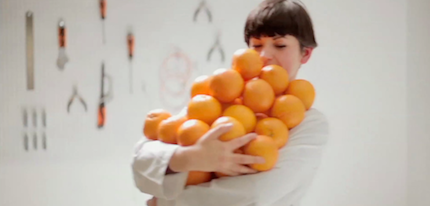
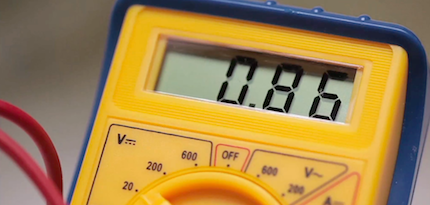
For example, the Tropicana billboard with oranges that created its own electricity. We were adamant that the whole billboard must consist of oranges. The look of the stand was dependent on the completely utilitarian way that the oranges were attached to the construction.
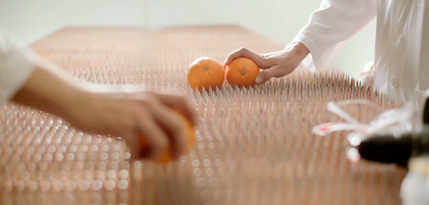
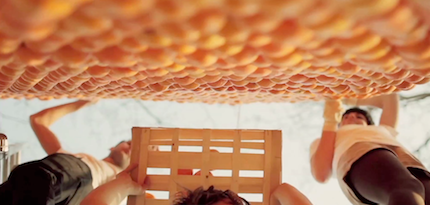
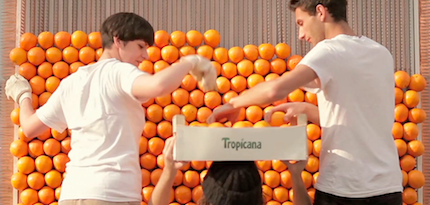
S: The design of the letters composing the company's name was simplified, leaving just the minimum necessary for recognition. The leaving out of certain detailing of the letters wasn't because we like it better that way visually, but because there wasn't enough energy to light up the largest and most complex letters. From afar, it looks as if the design of the lettering is a style element.
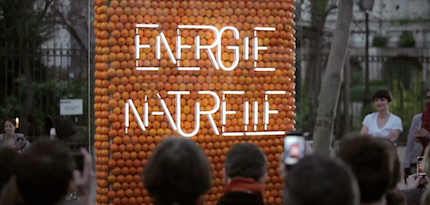
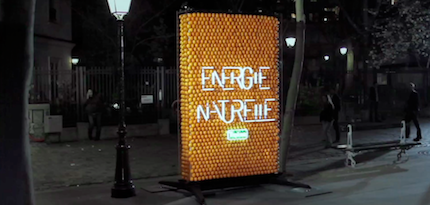
A: We work as designers in the sense that we give every advertising idea a body, skin, skeleton and muscles – an identity. The look and visual aspect of an ad is a very essential part of the project.
How do you divide the weight of a message between its textual and visual features?
S: Usually our work conveys a message in many more ways than just text and pictures.
A. Our ads don't have much text, we put the emphasis on visual forms of expression. Although when presenting our ideas to the head of the agency, we try to formulate them in words, but with the maximum of simplicity, short and to the point. If our idea doesn't come across in one sentence, if longer explanations are necessary, than something is wrong with it. It's not a really good idea, then.
And interactivity?
S: That is only one of the ways to get a message across.
A. Interactive projects don't only help get people's attention, they get them involved. However, interactivity is not an end in itself. Some projects and responses to client requests don't require special involvement from people, just watching an ad can be enough. Sometimes video is the best answer.
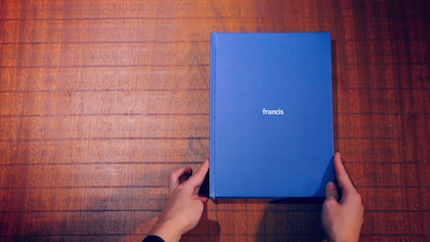
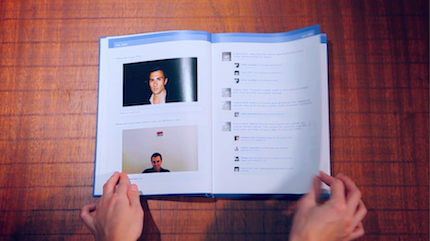
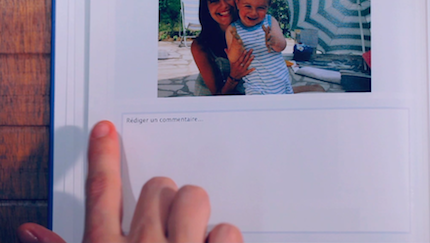
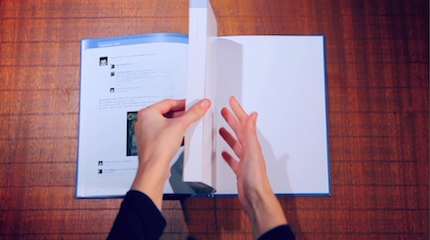
S: It's not as if we make applications and use Twitter just because everyone's doing that now. When we were asked to make an application for Facebook users, we came up with a real book instead. Completely opposite to the regular media of Facebook.

Does that mean that you still believe in the power of traditional ad media?
S: Definitely. A good poster can be very compelling and they still work.
But you still favor other methods of getting the message across.
S: That's simply more exciting. Why respond to a client's request with just one poster that can be made in two months, if the solution can be made into a much more ambitious campaign by involving people interactively. That way a campaign can be made more informative and it's much more fun.
A: We've been taught to be very traditional creative directors. The basis of our education was print media, which is why we're very impressed by good typographical work, for instance, an ad in The Economist. It's perfect – there's nothing to add, nothing to take away.
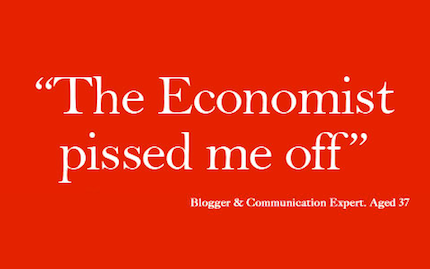
But we come from a different generation. We've grown up with video games, MTV and the internet, which is why it seems obvious to get people involved in our ads. In addition, printed ads have been around for more than a hundred years. There's a huge number of this type of ads. So much has already been done. By using the so-called new social media, there is more opportunity to create something unprecedented, experimental and fresh.
Do you believe that social web media have a large role in today's society? Is their ability to cause a revolution exaggerated?
S: Of course, it's impossible to create a revolution just through social webs, but these media definitely can help bring one about. Sometimes it's simply amazing and unbelievable how many followers and posts a Twitter account can have, and the kind of response you can get in these media.
A: I don't believe that you can bring about real change in the world just by sitting at home and supporting protests through social media. Their largest role is the dissemination of information, and the more people know, the larger the possibility that they will want something or will change something. For instance, the Murdoch scandal in Great Britain at the moment – if it wasn't for Twitter and other social media, there would have been a greater chance that everything would have been hushed over. It would be easier to hide it. As soon as people learn of something, they start asking questions and make changes happen. However, we can't completely evaluate the role of the social media right now. That will only be possible with the passing of time.
But the role of social media in private communication? Do they help us better understand one another?
A: That's a completely different thing. Friends are friends and Twitter can't change anything in their communication. Other values are at work here. There still is a big difference between people who are close to you and people who you simply know. Social media are just a way of quickly finding out what everybody is doing. Our closest friends haven't been found through Facebook. Friendships don't form there. However, social media help us very much in our work; it's an easy way to get people involved.
S: I regularly look at Coca-Cola's web page to see what they've put up. It's amazing that Coca-Cola can reach 6 million people in a moment. They're all writing comments. We used to just hope that someone would see our ad; now, people involve themselves in campaigns.
People often talk about the huge influence that advertising has on our lives, and that creative directors themselves sometimes feel very important.
S: The advertising business is just a small microcosm where we seem important to just ourselves.
A: A creative director's prestige is also dependent on the country. Maybe creative directors in Brazil feel like superstars, but in France we certainly don't.
S: Superstar status is, of course, also dependent on what you've done. If you've created an ad recognized by millions of people, then possibly, the author himself may feel like a celebrity.
A: But that's not about us.
Could you change the world?
S: We're used to solving problems and we can not only improve our clients' business indicators, but we can use our abilities in other areas as well.
A: We worked for the movement Greenpeace. Our campaign helped Greenpeace take in significant amounts of donations; in this way, we can do something good for the world. True changes can only be brought about by state governments, but we can help, or at least try not to do anything that would be bad for the earth.
Advertising wasn't the first thing that you both wanted to work in.
S: I wanted to study industrial design at Berlin's Art University.
A: That would also be problem solving, which is the basis of a creative director's work.
S: I thought it would be great if I could make something that would become part of a person's life. I had decided on designing space-saving furnishings, because I had myself grown up in a small apartment where I had to share a room with my sister. But I couldn't draw. I had to draw a line across my dreams and forget about them. We even now create things. But they're not couches.
A: We could also create a couch. It all depends on the client and the problems that must be solved. We have the opportunity to work with so many different people from many different areas. If you're a graphic designer, you have your style (rarely does a designer have more than one or two creative styles), and that's it – you work within the bounds of your narrow, creative handwriting.
You really have no boundaries?
A: We have quite a few ideas that have never been brought to fruition because of their large financial budgets. But mostly clients buy our ideas and we can bring them to life. There are quite a few legal restrictions that cause us to reign in our fantasies. For instance, in France it is illegal to film and photograph children for commercial purposes. This is the difference between art and advertising – an artist can make something crazy and say “This is art!”. Creative directors can't do that.
S: There are also technical restraints. Our project for Tropicana almost bombed. We didn't know until the last minute whether or not the electricity generation on the billboard would work or not. When everything was set up, the billboard really did light up, but for only five seconds. At that moment the client showed up and said: “What? This whole thing was just for these five seconds?!” We did end up solving all of the technical problems. But we often don't know how people will react to our work – will it work, will people get involved? We've never had a classic film shoot – where everything is ready and you just have to film scene after scene.
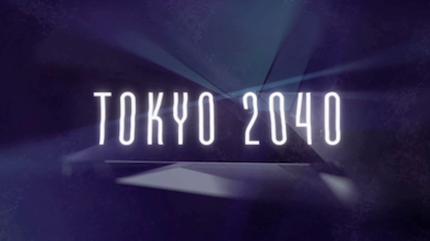
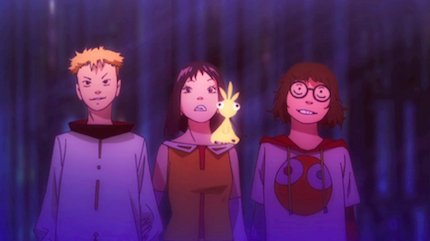
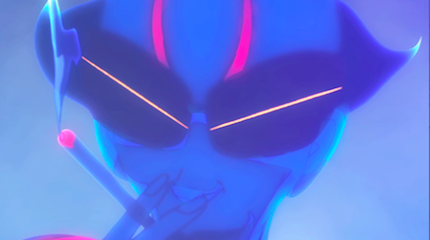
A: When we made a 15 minute-long anime film for teenagers about the dangers of smoking, everyone said we're crazy, no one's going to watch such a long commercial. But more than half a million people ended up seeing it, and 92% of them watched it to the very end. We thought it would be good if this indicator had been just 5%. If the idea and its presentation are good, than you can hold people's attention, even for hours.